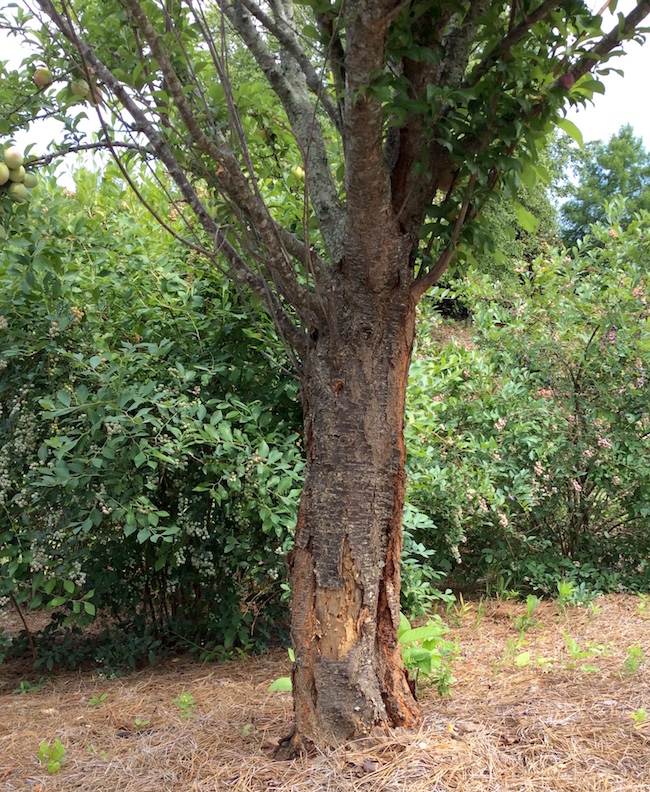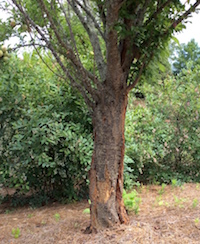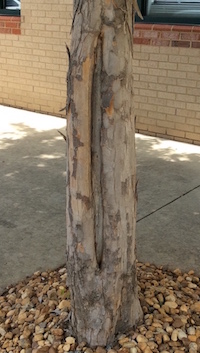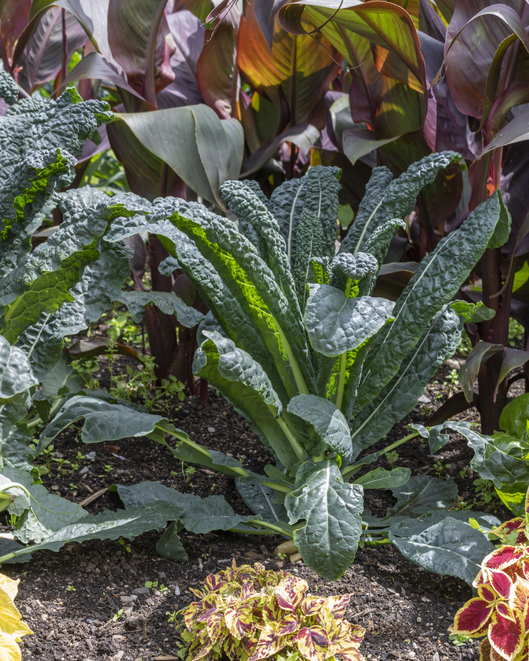Split bark, or vertical cracks along the lower tree stem of young trees, most commonly occurs on thin-barked trees such as dogwood, elm, maple, cherry, apple, peach and plum trees.
Large cracks can become long-term open wounds that are more susceptible to wood-boring insects, fungal diseases and wood decay. Unfortunately, there isn’t much you can do to help a tree with a bark injury, but you can prevent issues with a little forethought at planting time.
Thin-barked trees planted at hot sites with full sun exposure in the afternoon are highly susceptible to a disorder known as sunscald. Trees that are adapted to shade, such as dogwoods and Japanese maples, should not be planted in full sun.
Sunscald can occur when the cambium cells — active, growing tissues under the bark — heat up too rapidly during sunny fall or winter days. Extremely cold temperatures following warm periods can also kill cambium cells in the trunk. Long, vertical cracks or scars due to frost may form on the lower trunk, usually on the trunk’s southern or western side.
Bark injuries from sunscald can impede the tree’s ability to take up water and essential nutrients at the roots. Bark injuries from lawn mowers and string trimmers have the same effect.
Trees that are moisture-stressed during a drought are more likely to have sunscald issues. Spring-planted trees are often more vulnerable to sunscald or sunburn because they haven’t had a chance to acclimate to their new environment prior to summer.
Further, young trees may not have a full leaf canopy to shade the lower branches or stems for the first few years after planting. Heavily pruned young fruit trees are more likely to have problems with sunburn as a result of exposure. Trees planted too close to parking lots or driveways can suffer from sunburn as a result of the sunlight radiating off the pavement.
The orientation of a tree after it’s transplanted from a nursery to the landscape may also be a factor. In the nursery, the tree may have adapted to a southern or western exposure on one side. If it is oriented differently during transplanting, it may be more vulnerable to sunscald or sunburn injury. Take the time to mark the north side of the tree at the nursery, then orient the stem in the same direction when you plant that tree in your landscape.
It may be worthwhile to use a commercial tree wrap or plastic tree guard to protect thin-barked trees for at least the first couple of years after planting. Tree guards or wraps should be white to reflect sunlight. Tree-wrapping tapes can be purchased online or at many garden centers and nurseries.
To wrap the tree, start at the base of the tree trunk and wrap up to the lowermost branches, overlapping each layer by a half-inch. Wrap newly planted trees in the fall, remove the wrap in the spring and reapply it if necessary. Tree wraps are temporary and should not be used once the tree develops thick, corky bark. White, latex, interior-grade paint can be applied to the trunks of young fruit trees if aesthetics are not a concern.
Avoid purchasing trees with bark injuries. Trees with these types of wounds may never fully recover and may be permanently stunted or short-lived. In more severe situations, bark splitting can girdle the tree stem and shut off the flow of water. These trees can die very suddenly in drought conditions.
For more information, see the UGA Extension publication “Shade and Street Tree Care (B 1031)” at www.extension.uga.edu/publications.









